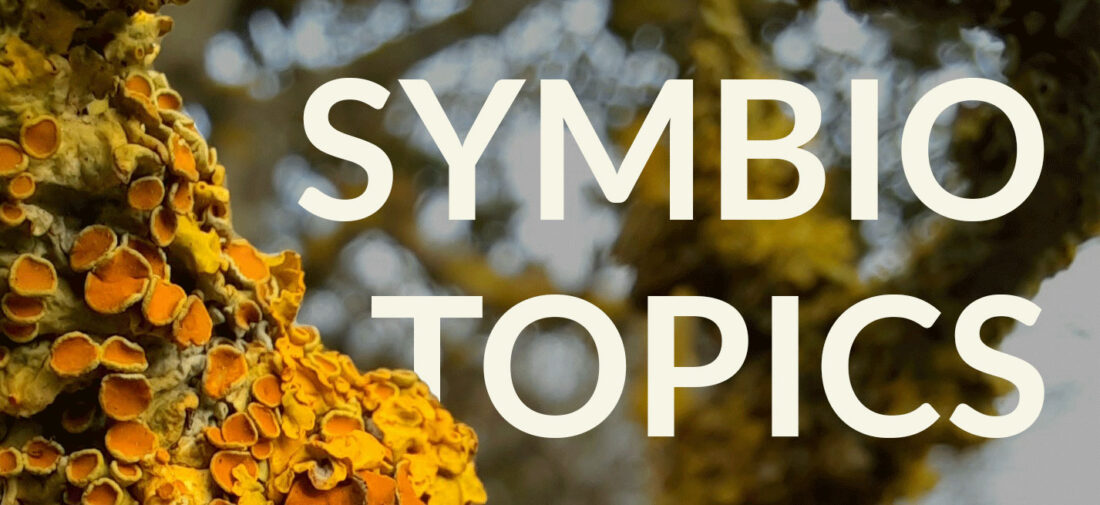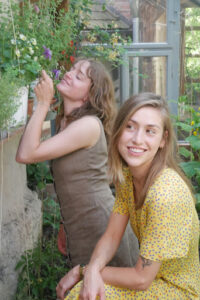New podcast series: Symbiotopics!
For the past two months, BioArt Laboratories’ Lena Kortman and Bonnie van Vugt have been working on a new podcast series where they invite you to the Symbiocene.
Wait, what is the Symbiocene? The Symbiocene is the hypothetical era after the Anthropocene.
The term ‘Symbiocene’ was coined by the Australian environmental philosopher Glenn Albrecht, In his essay “After the Anthropocene” which came out in 2015, Glenn makes a case for the new era in human history: the Symbiocene. Now it is worth bearing in mind that the Anthropocene is not a paleontological designation of an epoch, like the Pleistocene and the Holocene but a socio-ecological characterization that indicates the dominance of humans over the rest of all life on earth. The Symbiocene proposes an alternative to this, one where humans are not central, but cooperate with nature. Get to know more about the meaning of the Symbiocene in the first episode of Symbiotopics, where Lena and Bonnie talk with Glenn himself about this and the role that art has in the transition to a new worldview.
In the second episode, Lena and Bonnie visit artist Diana Scherer, who weaves plant roots into intricate patterns. In her work, Scherer explores the relationship of man versus his natural environment. Her longterm project InterWoven originated as an art project with an intuitive approach and has also developed into an innovative material research. Working on this project Scherer shifts between disciplines from art to design and science. To develop the work she collaborated together with biologists and engineers. Through her installations she examines the boundaries between plant culture and nature. What does “natural” mean in the Anthropocene and is man not also nature or a parasitic species on the rest of his environment? Lena and Bonnie talk with Diana about whether art and design can facilitate symbiotic relationships and about how her work as an artist is connected to science.
Another guest on Symbiotopics is Joe Davis, the legendary pioneer in BioArt, whose work is bridging the gap (if there was ever any) between art and science. Lena and Bonnie went to Germany to visit Joe and got a glimpse of some projects he was working on there. He is an artist-scientist, using synthetic and molecular biology and bioinformatics, to create mind-blowing “space art”, and sculpture, using media including centrifuges, radios, prosthetics, magnetic fields, and genetic material. Bioart as a genre is important within the historical moment of the Anthropocene, as it is blurring the lines between art and modern biology, and it raises philosophical, societal, and environmental issues that challenge scientific thinking. Bioart has begun to show us ways in which art, science, and philosophy can come together, and with this, it carries the potential to examine possible new futures. In Symbiotopics, Lena and Bonnie introduce you to the ecocentric worldview of the Symbiocene. Stay tuned!




